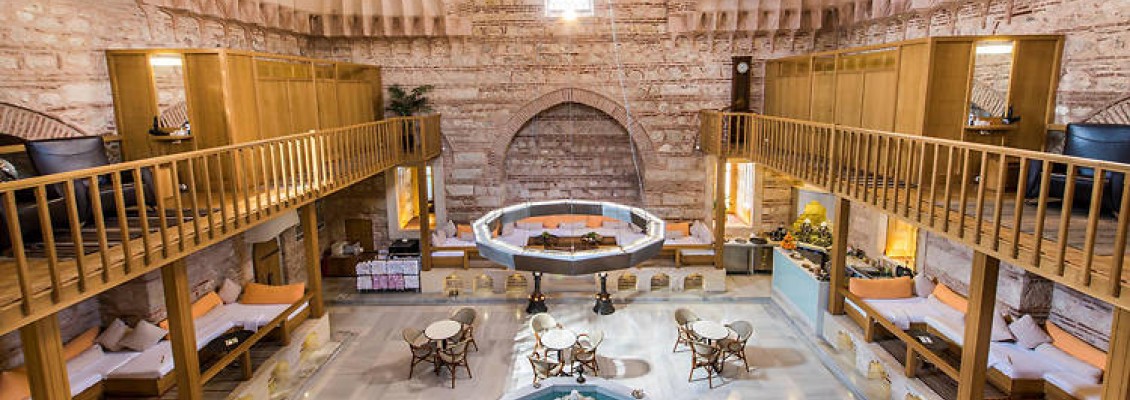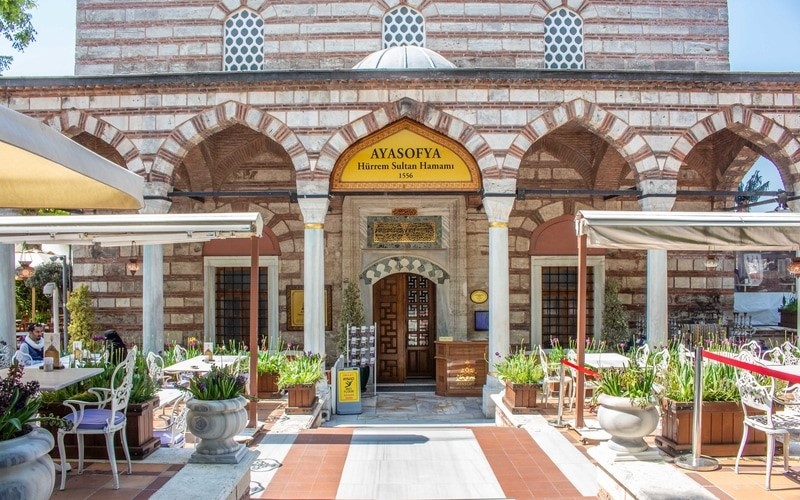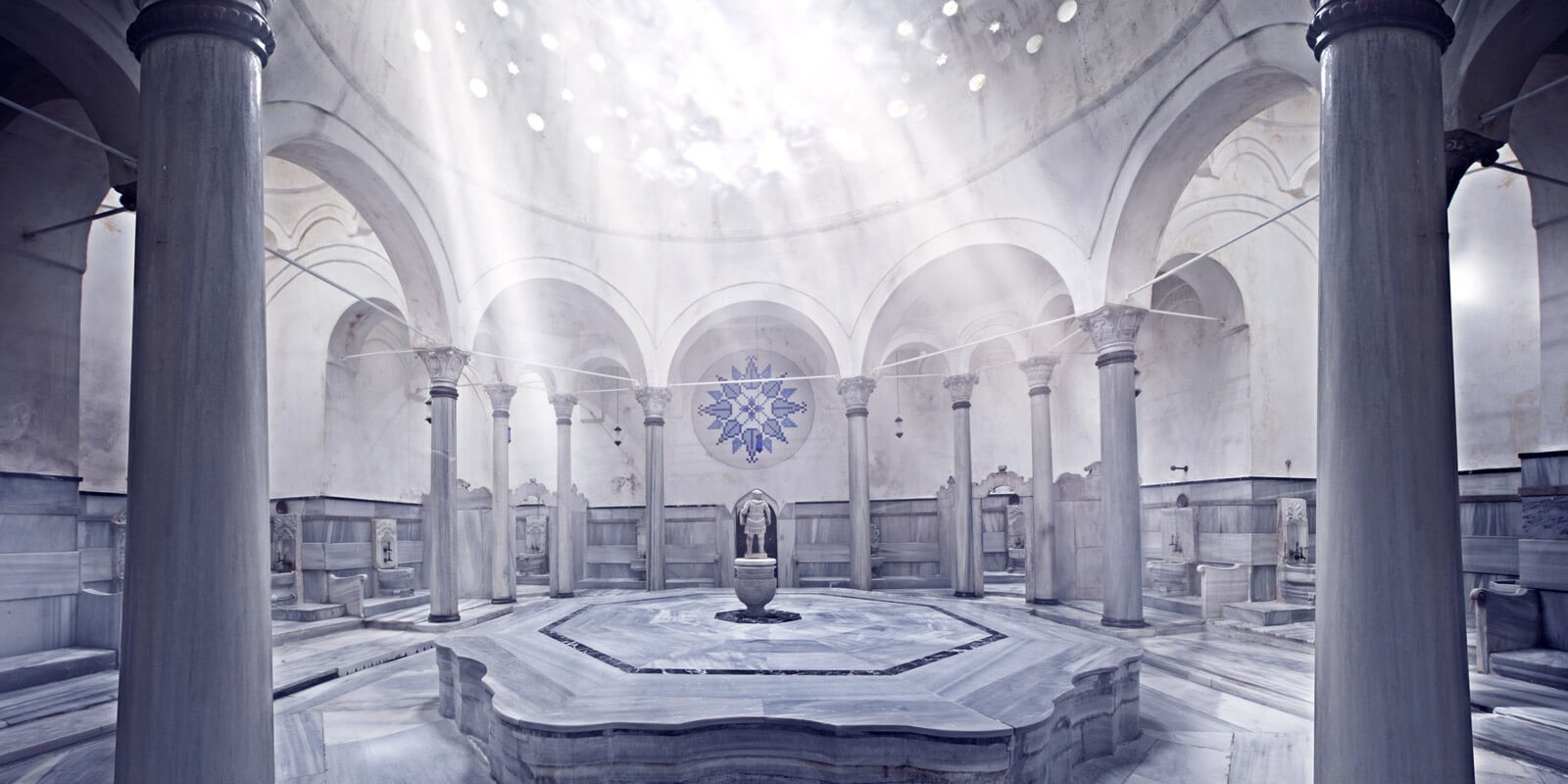
OTTOMAN TRACES IN ISTANBUL - 2 –
HAMAMS
Bathhouses have been built in different civilisations since
the early days of human history. They became especially popular in the Roman
world. Turks also gave considerable importance to bathhouses, known as “hamam”
in Turkish, and built new hamams where they went. During the Ottoman period in
particular, hamams flourished in number and style at different periods of the
empire. While most of them are out of service today, some of them are still
open for visitors who want to experience a Turkish hamam.
Hamams were built for two reasons. One reason is that they
were endowed to charity foundations, as they were a quiet source of income. The
other reason is that the purpose of the baths was to serve the mosque
community, which was at the centre of the structure in which they were located.
A social complex would be built to provide a social area for the community; it
would comprise different buildings such as bathhouses and soup kitchens, etc.,
usually with a mosque at the centre. The importance of hamams was increased by
the fact that cleanliness was (and is) a crucial aspect of religion.
Visitors can find many historical bathhouses in Istanbul.
You should check them out before choosing one based on the services you are
interested in (massage, bathing etc.), as well as your budget. Here is a
selection of famous bathhouses:
Hurrem Sultan
Bathhouse
The Hurrem Sultan Bathhouse is located in one of the most popular spots in Istanbul: Sultanahmet Square. The bathhouse was built by prominent Ottoman architect Mimar Sinan between 1556 and 1557, with the endorsement of Hürrem Sultan, the wife of Suleiman the Magnificent. The bathhouse was in active use until 1910, before serving as a prison, a paper storehouse and a petrol depot. It was restored between 1957–1958. It then served as a carpet shop until 2008. These days it is once again a bathhouse, attracting visitors from far and wide. In the Hurrem Sultan Bathhouse, the women's and men's sections were built on the same axis for the first time, which was an innovation in Turkish bath architecture.

Cağaoğlu Bathhouse
The Cağaoğlu bathhouse is one of the largest double bathhouses in Istanbul. It was built in 1741 during the reign of Mahmud the First, and is one of the last bathhouses of the Ottoman period. It is possible to see traces of classical Ottoman architecture as well as elements of the baroque style which gained popularity during the same era. This historical bath is still in service.

Çemberlitaş Hamamı
The Çemberlitaş Bathhouse is said to be Turkey's
longest-running business, operating since 1584. It is located on the Divanyolu
in Çemberlitaş, next to the monument by the Vizier Inn. It was built in 1584 by
Mimar Sinan with the endorsement of Afife Nurbanu Sultan, who was the wife of
Selim the Second. The reason for the construction and endorsement of the
bathhouse was to bring in money for the Vâlide-i Atik Complex in Üsküdar. The
Çemberlitaş Hamam was planned as a double bathhouse, featuring two almost identical
bathhouses adjacent to one another with different entrances for women and men.
Today, women also use the men's entrance, and they enter their own section
through a newly opened side door.
Çinili Bathhouse
The Çinili Bathhouse is located in Üsküdar, on the
Anatolian side of Istanbul. Kösem Sultan was the one who ordered the
construction of the Çinili mosque, library, police station and Turkish bath in
Üsküdar. The bathhouse was built for the bathing requirements of the Çinili
Mosque construction workers. Although the mosque has been mostly preserved to
this day, it’s unfortunate that the tiles (çini in Turkish - hence “Çinili”)
have been stolen. Despite this, the interior of the bathhouse has been
decorated exquisitely. The bathhouse is open to men and women at different
times—8 am to 7 pm for women and 8 to 10 pm for men.

Leave a Comment